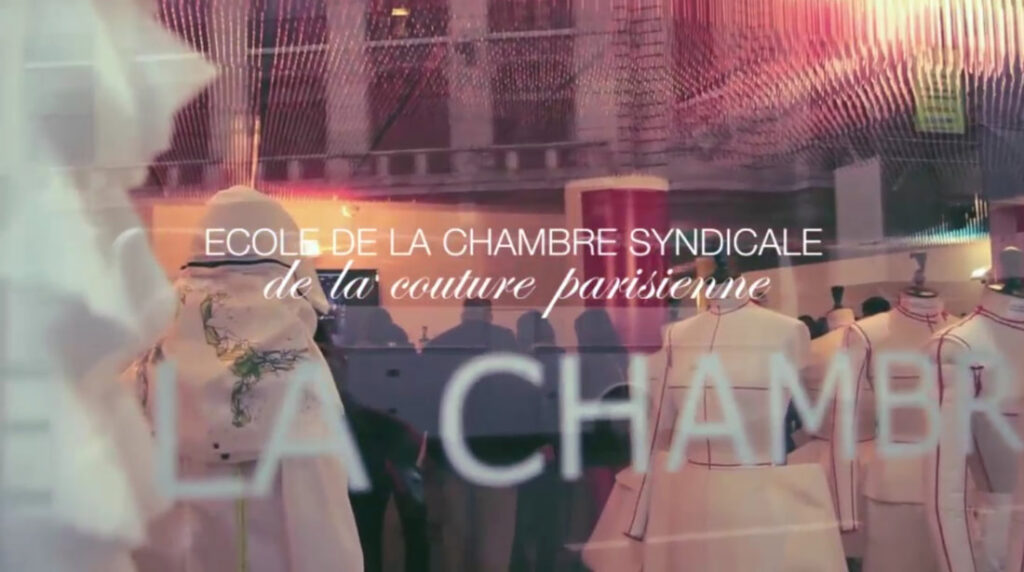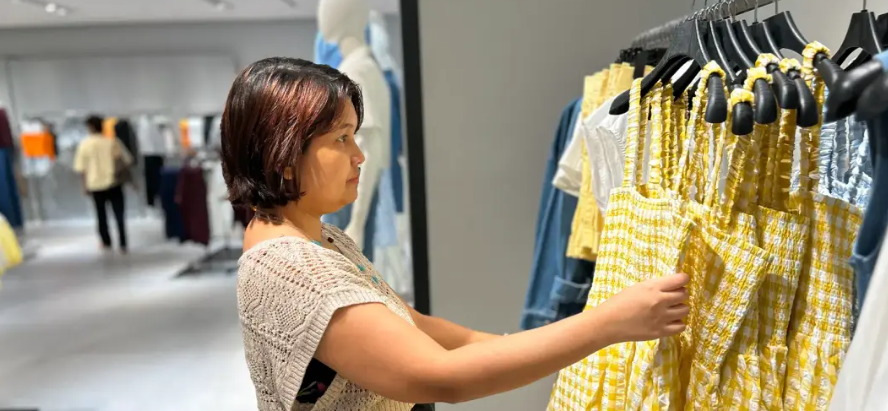Increased fetishising of cheap clothes has led us to prioritise quantity over quality. With this degradation in the fashion landscape, has fashion itself lost its meaning? Grandma might have a thing or two to say about it.
1529 words; 7 min read
Updated 5 Nov 2018
Above featured photo: http://missowl.com
The phrase “fast fashion” refers to low-cost clothing collections that mimic current luxury fashion trends. Fast fashion helps sate deeply held desires among young (and not-so-young) consumers for luxury fashion, a world that embodies pieces of clothing, high-end jewellery, and jetsetting lifetyles that is unattainable to many.
The changing fashion landscape, however, has undoubtedly led to the degradation of society as consumers. And we’re not wholly to blame for it. Read on to understand why.

Photo: Us as kids. When there were only four of us. Now there’s seven. (That’s me, second from the left, in the green T-shirt. Notice the oversized trousers? Yup, I’m sure we didn’t buy that at the shops. No kiddin’. Same with my bro, yo.) We all wore hand-me-down clothing.
There used to be structure in fashion
Believe it or not, once upon a time, there was structure. The production model was based on a critical distinction between ‘fashion’ and ‘garment’. At the top of the tree was couture. Its unique selling proposition (USP) was the amount of skilled labour inherent in every piece. The look was in the hands of the #designer and creator, and the volume of repeated pieces was limited to tens at the most. Final finishings were typically #handmade, and the buyer might not see the finished product until the very end of the process. Guess where the fashion weeks come from? You guessed it, and this cycle occurs twice a year only. (Check out this great low-down on Haute Couture by British Vogue.)
And then there was Ready to Wear, or Prêt-à-Porter. Ready-to-wear has rather different connotations in the spheres of fashion and classic clothing. In the fashion industry, designers produce ready-to-wear clothing, intended to be worn without significant alteration because clothing made to standard sizes fits most people. They use standard patterns, factory equipment, and faster construction techniques to keep costs low, compared to a custom-sewn version of the same item. Some fashion houses and fashion designers produce mass-produced and industrially manufactured ready-to-wear lines but others offer garments that are not unique but are produced in limited numbers (industrialised limited cuts.)
And then there are the basics. Like your jeans, your t-shirts, and undergarments. This is the structure.

Some luxury brands you may recognise
Fast-forward to now, Fast Fashion has unsustainably fed our wardrobes by linking everything we buy to have a direct lineage to the runway somehow. We’ve entered a new era of consumption (or, as you may recognise as ‘fashion’) where we can now ‘design’ styles inspired by the runway and hang garments in a shop rail in as quick as three weeks. Even wardrobe basics are expected to be infused with the aura of big design and big designers. So-called style trends followed, once we kept up with more carbon copy production and consumers started purchasing and wearing the same pieces.
“We live not according to reason, but according to fashion.” –
Seneca
The degradation of the fashion landscape
It’s genius, though. For consumers, not for the environment. As stated above, most people see high end luxury as something unattainable. This world conjures up images of exclusivity, beauty and art, and dream-like settings. In a way, Fast Fashion fills that void in that our fantasies can now come true.
Our thirst to fulfil this dream is so big though, that it cannot be fed completely, and it’s ever-lasting. The couture houses are now seemingly perpetuating the problem, too. Instead of only producing two seasons’ worth of collections, we now have other ones gracing the runways – ‘capsule collection’, ‘resort collection’, ‘pre-fall’, and similar.
The Zara production model for example (I’ll discuss this later on) focuses on the creation of smaller-than-average production batches to overcome the dizzying rates at which trends evolve, which in turn provides for limited floor stocks for its designers’ creations. As a result, the average consumer, seeing the last pair of size 8 blazer on the shelves that fit her, is then tricked into thinking affordable ‘fashion’ will be gone forever if you don’t snatch it now. Harvard researchers (2004) have described this drives a sort of hunger… ‘a sense of tantalising exclusivity.’

We used to have a system
What this means for us
There’s a sweet irony to all of this. The industry’s foray into ‘dynamic’ fashion has created a consumerism monster – and as a consequence, they are constantly chasing their own tail. This pandemonium is what ultimately keeps the weaves turning.
It is then fair to observe that the industry’s meteoric rise due to Fast Fashion has peaked, and it’s on a spiralling comedown. Fast Fashion has become a bit ugly, and tacking it is like getting into an argument with someone who’s physically bigger than you, that is difficult to neutralise.
In the meantime, in people’s homes all around the industrialised nations, this is the resultant reality we’re faced with. Picture this: your burgeoning wardrobe with clothes hanging out of them with tags still on. The rush of people busting at the doors at Boxing Day sales. The way we simply just throw away our clothes because they were a ‘bargain’ discounted buy, purchased for a mere $5.
The problem with attainable cheap ‘fashion’, is that you have too much choice. Ask yourself this: despite your hard to shut drawers and fat wardrobe, philosophically speaking, it is highly likely you won’t be happy with what you got. Essentially, how many mornings you do wake up to go to work, a party, a wedding, a dinner date… Thinking you can’t find ANYTHING to wear?
“Maybe all your clothes should past the Grandma test.”
All is not lost, however
I remember my conversations with my grandmother when she talks about how she bought her washing machine two decades ago and it’s still going, after about three repaired breakdowns. She comes from a generation that repairs and mends things, not throw them away because they’re a little troubled. I always thought grandma’s philosophy of quality over quantity was potent advice that made sense. Her words of wisdom have stayed with me and have gotten me through lots of hype over my growing up years.
Maybe all your clothes should past the Grandma test.
Grandma’s right though, isn’t she? Quality always wins over quantity. Except for children’s clothes, I get that (in some cases though, not all.) In grandma’s world, the hand-me-down philosophy makes perfect sense for children in a family. I never wore new clothes when I was younger. I always wore dad’s daggy work pants that he stopped wearing, the ones with the pleats. And did I end up an adult with negative scars from my ‘styling’ sense? I don’t think so.
I am nowhere close to say I can conjure up Grandma’s memories and things that bring her nostalgia. She’d been through the war so I have no authority whatsoever on the topic. But I don’t think it’s quite a stretch to say I am sick of mass consumerism. Can we bring art, beauty, dreams, and exclusivity back please? I’d really like to see the end of Fast Fashion, pronto. How many times have you walked in a clothing shop for a browse, and thought to yourself: Wow, these cheap, polyester blend clothes on the racks are so….. unattractive! And uninspiring! And quickly thought that window shopping idea was a bad one?
Grandma doesn’t go out anymore because of her bad legs, but I’d be ashamed to take her clothes shopping at the mall. It’s beyond embarrassing. She taught me lots, and I can attribute my sense of style to her. She instilled in me that we can have our own luxuries in life – from the few ‘good’ things we own – that we will treasure forever. That’s why we appreciate the clothes from their era so much. The fabric, the stitching, the way the seams were put together. You can actually feel the luxury.
When grandma reminisces on the good ol’ days and you see that spark in her eyes… you know she means better quality products, better quality clothes, better quality furniture. Yes, contrast this to the story about the burgeoning wardrobe above.
Which brings me to this: are we only pretending to feel good in our cheap clothes?
Well, maybe you can change that today. Try buying quality-made products that lasts you more than thirty wears. Can we look at buying clothes a bit differently from now on? Be a little rebellious. Invest in something you really love when you’re next at the shops, something that would make your grandma proud.
Stay tuned for the next write-up!
Join us in our Slow Fashion movement with the hashtag #ConscientiousFashionista and #wardrobetruths on Instagram, and follow us at @fashinfidelity.
Tags: #createyourtrend #styleoverfashion #liberation #freeyourself #fastfashion #slowfashion #ethicalfashion #responsiblefashion #intentionalpurchasing #fashioneducation #wardrobetruths #whomademyclothes #fashionisnolongertrendy #grandmaknowsbest
References: “Rapid-Fire Fulfillment,” Harvard Business Review, Vol. 82, No.11, November 2004.





Your ability to make complex topics accessible is commendable. I appreciate the effort you’ve put into this post.
Having resd this I thought it was rather informative.
I appreciate you finding thhe time aand energy to put
this informative article together. I once again fknd myself
spending a lot of time bboth reading and posting comments.
But so what, it was still worthwhile!